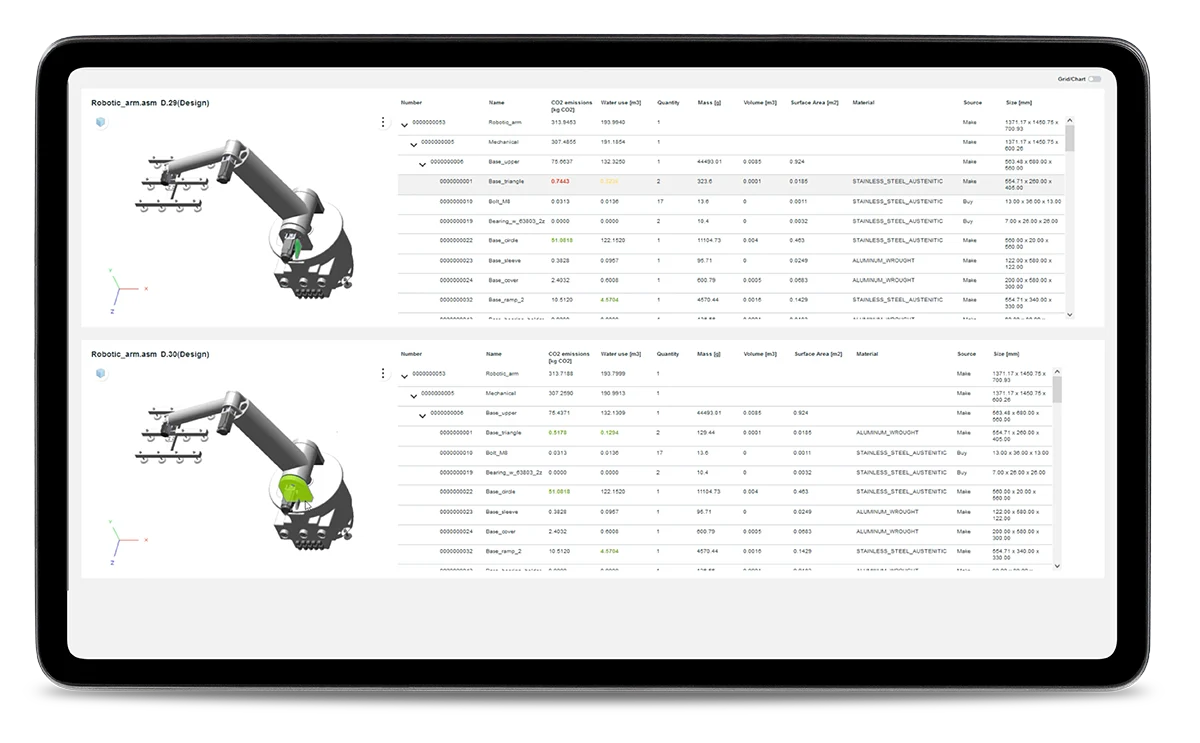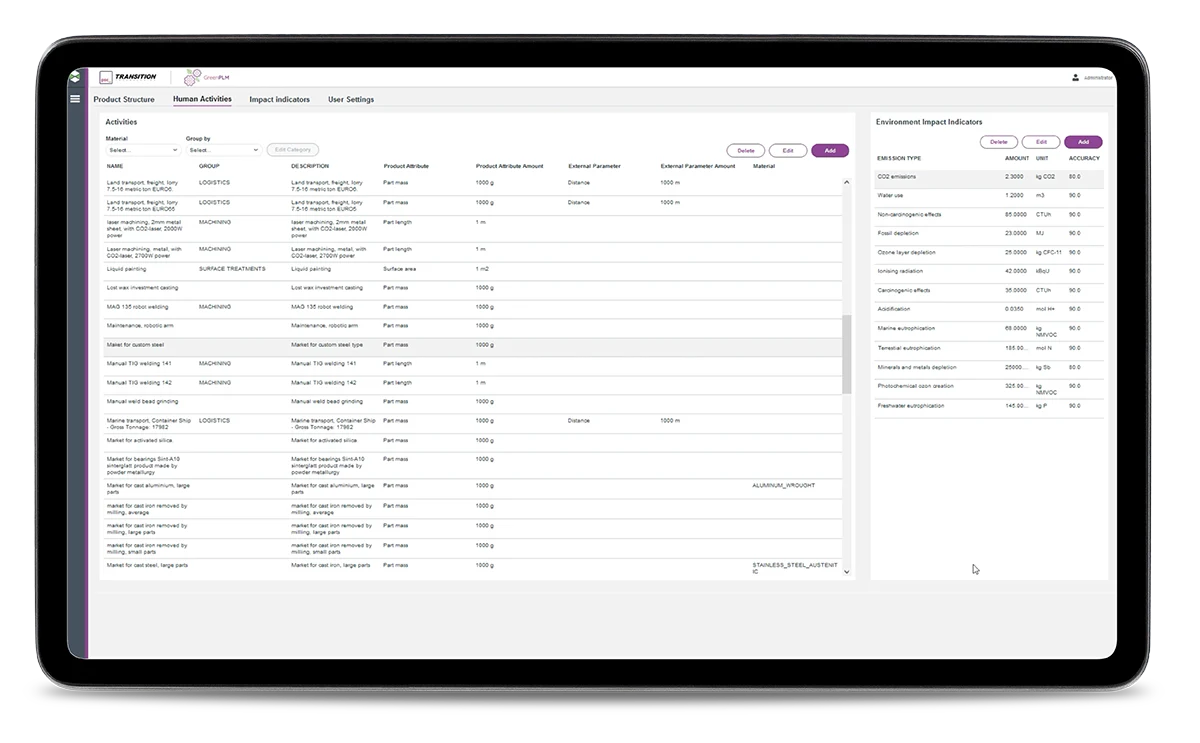ecoPLM – a sustainable product development
Make your products environmentally friendly at the design phase!
Embrace sustainability metrics first
Environmental aspects in design - a new paradigm


Sustainable product design is a pivotal KPI in the pursuit of product design for sustainability, with most parameters being established during the design stage.
Early assessment by stakeholders is crucial to preliminarily predict the outcomes of decisions made in the realm of sustainable product design
Download the leafletChallenges
Unlock the power of sustainability in product development
Navigate product design with our sustainability Roadmap - contact us and receive an initial roadmap for navigating product design.
Benefits
Features

Explore the capabilities of ecoPLM
FAQs - Frequently Asked Questions related to Digital Manufacturing and Digital Transformation
Sustainability metrics are tools used to evaluate and accurately measure the environmental impacts, social, and economic durability of various processes. They are essential in helping organizations understand the impact and effectiveness of their sustainability initiatives and identify areas for improvement. These metrics can be applied to a wide range of sectors including manufacturing, agriculture, and even product development. In the context of product development, sustainability and environmental metrics play a pivotal role. One such tool is ecoPLM, which provides a framework for assessing the sustainability of products throughout their lifecycle, from design to disposal. ecoPLM evaluates the environmental footprint of a product, including energy consumption, material use, waste generation, and other factors that affect the product's overall sustainability. The insights gained from this approach can then be used to inform sustainable product development practices.



